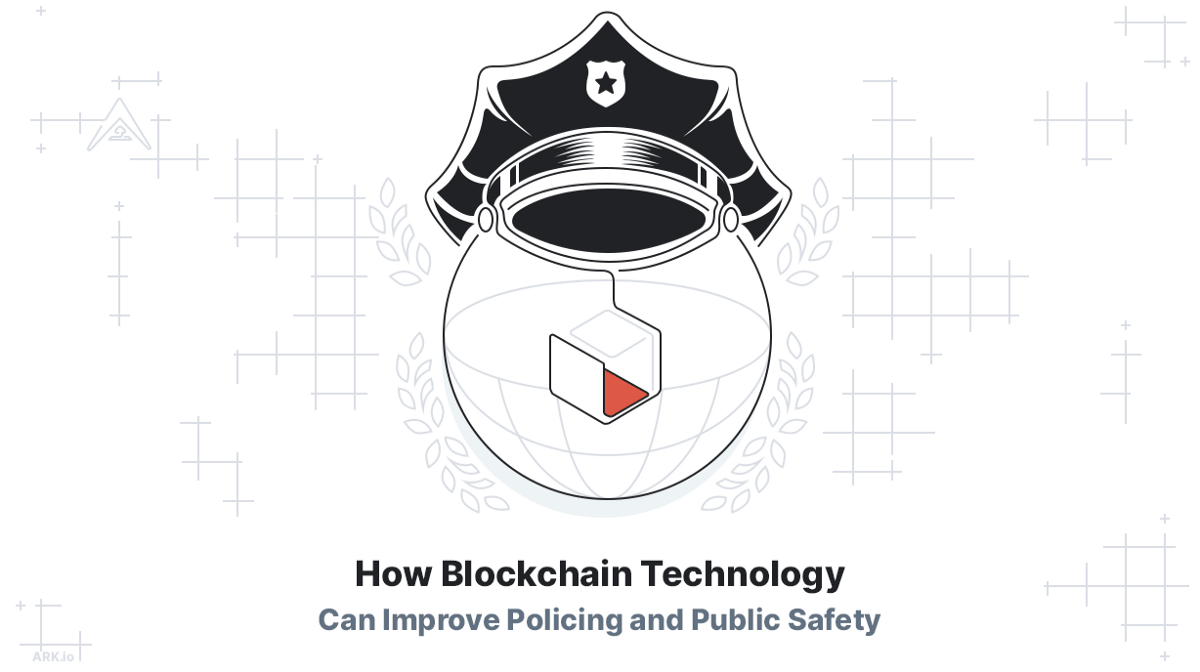During the first part of this series, we took a look at how blockchain technology solves legal disputes in the realm of copyright infringement. Today we are taking a look at how blockchain can improve policing and public safety. Specifically, the chain of custody in evidence and the authentication of digital evidence.
Currently, tensions between law enforcement and the public are at an all-time high. We are in an era where we are more likely to receive the full picture of a situation through a bystander’s cellphone video, yet much of this evidence is inadmissible in court. While these same videos can stir public sentiment, spark protests, and initiate change, it has become increasingly more difficult to authenticate and preserve digital evidence for its use in court.
So what is it that makes certain pieces of evidence inadmissible in court? One major factor is found in whether the evidence can be verified and authenticated. By authentication, we mean that the evidence has not been tampered with or contaminated. For criminal cases, this is of extreme importance.
The Chain of Custody
In terms of introducing evidence in a legal proceeding, we need a chronological “paper trail” of where that evidence has been. We refer to this as the Chain of Custody (CoC). The CoC is a way of ensuring the physical or electronic control of evidence. While it may seem overly obtrusive to document every single transaction and access to a piece of evidence in the CoC, it is vital to ensuring that a piece of evidence can be admitted in court without questions arising as to that evidence’s integrity and legitimacy.
So let’s look at the individual qualities regarding evidence that must be established within the CoC:
- First is Integrity, a piece of evidence cannot be altered or corrupted at any time it is transferred.
- Second is Traceability, the evidence must be traced from the moment it is collected to the moment it is presented in court or destroyed.
- Third is Authentication, any person that interacts with evidence must provide irrefutable proof that attests to their identity, which must be verifiable.
- Lastly, we have Security, when evidence is transferred from one entity to another, the process must be tamper-proof and not allow for the altering or contamination of any piece of evidence.
While each of the factors listed above is crucial, an internal inquiry into the Federal Bureau of Investigation (“FBI”) has shown that agents mislabeled, mishandled, or otherwise contaminated about 20,500 pieces of evidence out of 41,000 pieces. When mistakes like these occur, evidence in legal proceedings can be suppressed and cases can be thrown out entirely. When it comes to establishing a method for storing information in a trusted and detailed manner, blockchain technology is miles ahead of any other alternative.
Blockchain Strengthening Procedures
By its design, the current way evidence is handled is plagued by human error, corruption and a lack of oversight. However, certain blockchain companies are coming up with solutions that improve upon the CoC. While digital evidence is easier to register on a blockchain, how would you register a knife with fingerprints or a bloody glove? The answer: you base the solution on the packaging and transfer of that piece of physical evidence. For instance, Chronicled Inc. designed CryptoSeal to tackle this problem. CryptoSeal is a slim adhesive seal strip that contains an NFC chip that stores cryptographic information. By sealing an object with CryptoSeal such as an evidence bag, the identity data of the object, its registrant and packaging or asset metadata is registered on the blockchain. This in turn provides us a tamperproof way to track the identity and authenticity of a piece of evidence.
Other companies like Leonovus took the digital route and created what they refer to as a “vault” which stores data on a blockchain. The blockchain acts as an evidence locker and stores encrypted data across different cloud-based servers. Not only does this help protect data in terms of privacy but it also keeps track of how the data is accessed and by whom.
While these technologies prove that blockchain can solve the major problems with the chain of custody, it also has a wider impact on improving policing and increasing public safety.
How Blockchain can Reverse Negative Trends in Policing and Public Safety
Trayvon Martin and Michael Brown are just a few of the names that come to mind when discussing the improper handling of evidence and how it can impact a case. Both of these cases contained problems with the handling of evidence. Both of these cases created widespread protests and a larger public dialogue. Yet, here we are 8 years later and for all that has changed, much has still remained the same.
The way in which blockchain technology can help improve policing and in turn increase public safety is through accountability. The case of George Floyd was an incident that should have never happened. The video that surfaced online is incredibly distressing to watch and more so was captured from a bystander’s cellphone. While all officers at the scene had body cameras, it makes you wonder if the case would have received as much scrutiny as it has if we didn’t have video from bystanders. By entrusting evidence to a system that is proven to have exploitable flaws undermines justice. Body cameras can be tampered with after the fact, evidence can be deleted or erased.
While verifying the integrity of evidence and how it is handled can have a monumental impact on a case, this area only makes up a small fraction of what needs to change. However, blockchain provides a path forward that can provide an equitable solution and more importantly create a system of accountability.




